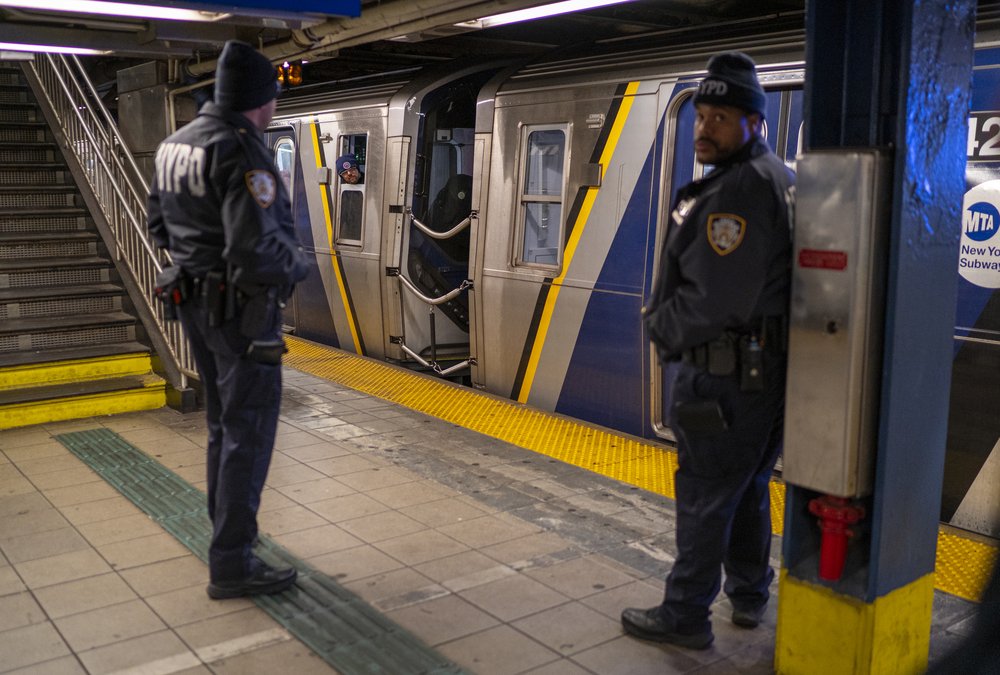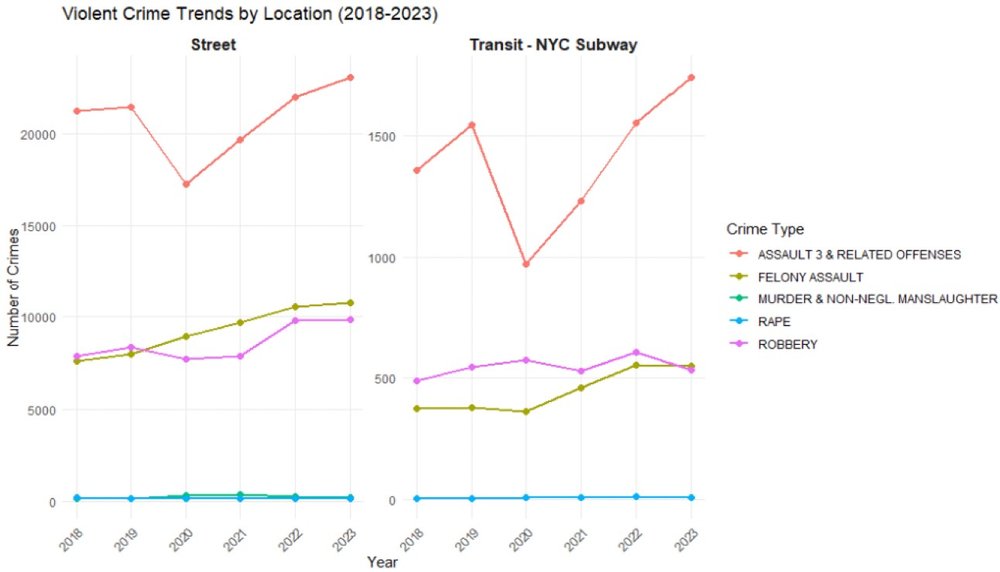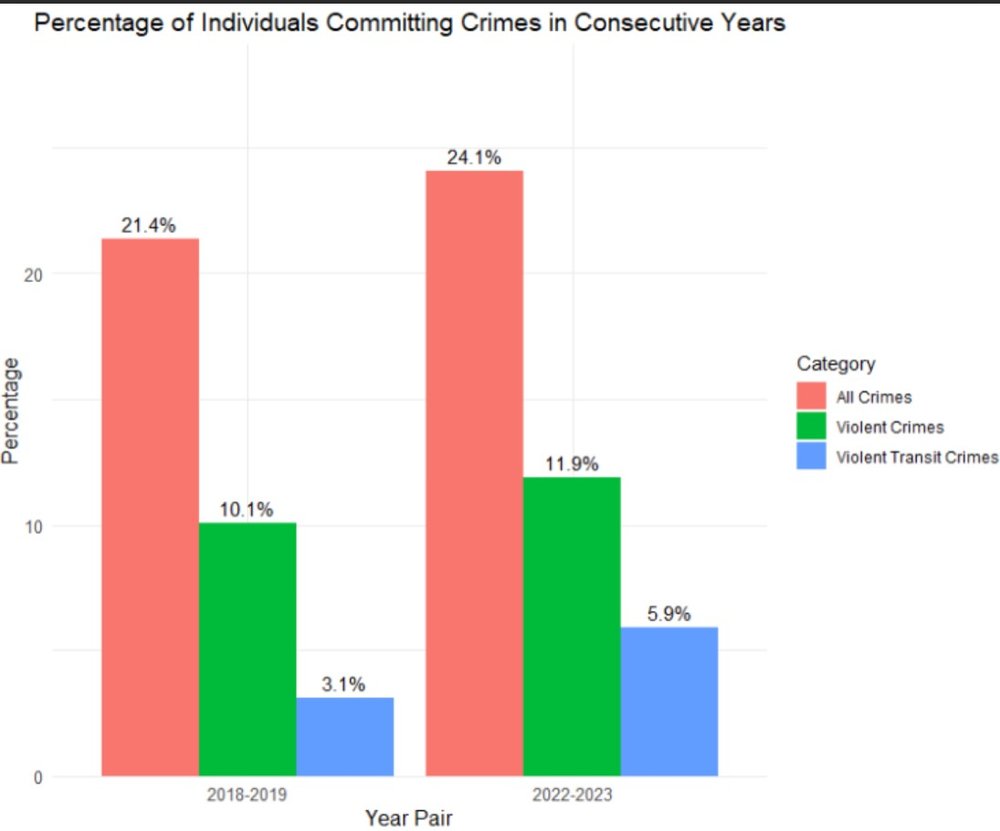NYC subway violence is concentrated at a sliver of stations and times, report finds
Jan. 24, 2025, noon
Assaults in the transit system have tripled since 2009, according to the civic organization Vital City.

Time and place can make a big difference in whether a subway rider encounters violence in New York City’s transit system, according to a new analysis.
Less than a tenth of the city’s hundreds of subway stations account for half of all violent crime underground — with some of the largest transit hubs at the top of the list — according to the report from the civic nonprofit Vital City. But researchers also found that commuters are more likely to become victims of crimes at smaller stations at the edges of the system late at night and early in the morning, when they are more likely to be alone or among few people.
“ One or two violent crimes can pop up at one of these stations that are in the outer boroughs, and suddenly that station has a high rate, comparatively to the number of people who are riding through it,” said Paul Reeping, Vital City’s director of research.
Reeping and his colleagues parsed years of data from the NYPD and MTA to identify where subway crime happens, who is behind it and who is targeted. The report comes as violence in the transit system has inflamed fears among some riders, especially after a run of recent high-profile incidents and a doubling in subway homicides last year. Mayor Eric Adams and Gov. Kathy Hochul have pledged to deploy hundreds more police officers on the subway to make riders feel safer. Officials have also rolled out thousands more surveillance cameras on trains.
While major crime on the subway is rare for the MTA’s millions of daily commuters, serious assaults in transit more than tripled between 2009 and last year, from about 150 to 540, according to Vital City’s analysis. Other crimes like robberies and thefts have decreased on the subway, the data shows.

Half of the violent crimes systemwide occurred at only 30 of the city's 472 stations, according to data from 2023. The stations with the most violence were among the busiest, though the report grouped crimes on moving trains with crimes at the nearest stations.
The following six stations experienced the highest amount of violence, and all of them had peak crime times in the afternoon or evening, Vital City found:
- 125th Street (4, 5, 6 lines; Manhattan)
- Lexington Avenue/59th Street (4, 5, 6 lines; Manhattan)
- Jackson Heights–Roosevelt Avenue/74th Street (7, E, F, M, R lines; Queens)
- 59th Street–Columbus Circle (1, A, B, C, D lines; Manhattan)
- Franklin Avenue (2, 3, 4, 5 lines; Brooklyn)
- Grand Central–42nd Street (4,5,6,7, S lines; Manhattan)
But some of last year’s most notorious subway crimes, including the fatal burning of a homeless woman on the F train, occurred in stations at or near the end of a given line. That incident happened around 7:30 a.m. at the Stillwell Avenue station in Coney Island, while another fatal attack on the same day happened around 12:30 a.m. at the 61st Street–Woodside Station in Queens.

“ We really don't know why the assaults are spiking,” Reeping said, noting that researchers have yet to establish a solid link between a variety of social factors and the violence underground.
Subway assaults often involve strangers, in contrast to similar crimes on the streets, he said. Reeping added that a sizable increase in physical attacks on police officers — which are automatically considered felony assaults — is also driving the increase. There were 120 assaults on police through September 2024, compared to 68 in the same period the year prior, according to the report.
Vital City reviewed arrest reports from the NYPD from 2006 to 2024, which showed many of the suspects had criminal records, histories of mental health issues, or experiences with homelessness. Among the top 10% of people arrested for violent subway crimes, almost 80% had mental health issues and nearly 90% were categorized at some point as “emotionally disturbed” or homeless, the data showed.

“We’ve been saying for a long time that when mentally ill people shelter in the subways, it’s bad for them, bad for riders, and bad for the system that failed to provide proper help," said John McCarthy, the MTA's chief of policy and external relations, in a statement. "As this study shows, there’s no question this societal problem touches transit and has changed the nature of crime underground."
"That’s precisely why the justice system needs to catch up with the MTA, which put cameras on every train and in every station, and the NYPD, which surged officers and is making arrests," he added.
The NYPD did not provide comment on the report.
Police have cracked down on fare evasion in recent months in hopes of deterring lawlessness in the transit system, but Reeping said that may not be the most effective tactic to reduce violence on the subway.
According to Vital City, about 2,000 total subway crimes are recorded each year, while about 150 million fare evasions occur annually on the subway. The group pointed to those numbers to demonstrate the lack of correlation between fare-beating and violent crime.
The report also found that the average age of those arrested for alleged violence on the subway rose to the early 30s from the early 20s over the past two decades. That could reflect a generational shift in violence underground, researchers said.
This story has been updated with additional information.
Feeling anxious about riding the NYC subway? Here’s a guide for staying safe underground. A weekend of violence on NYC's subways stokes fears about public safety Accused New Year’s Eve NYC subway shover pleads not guilty to attempted murder Gov. Hochul wants a cop on every overnight NYC subway train